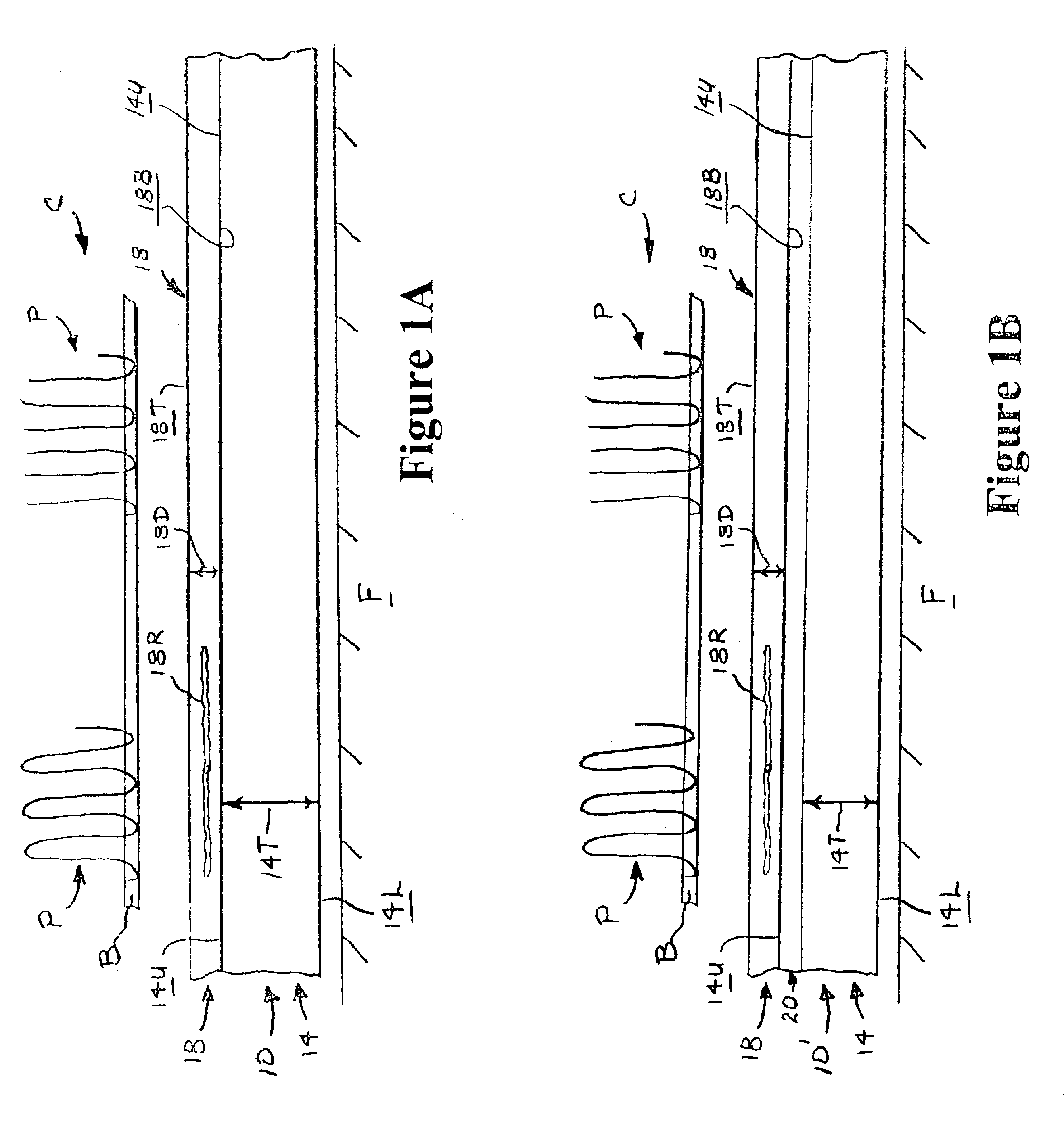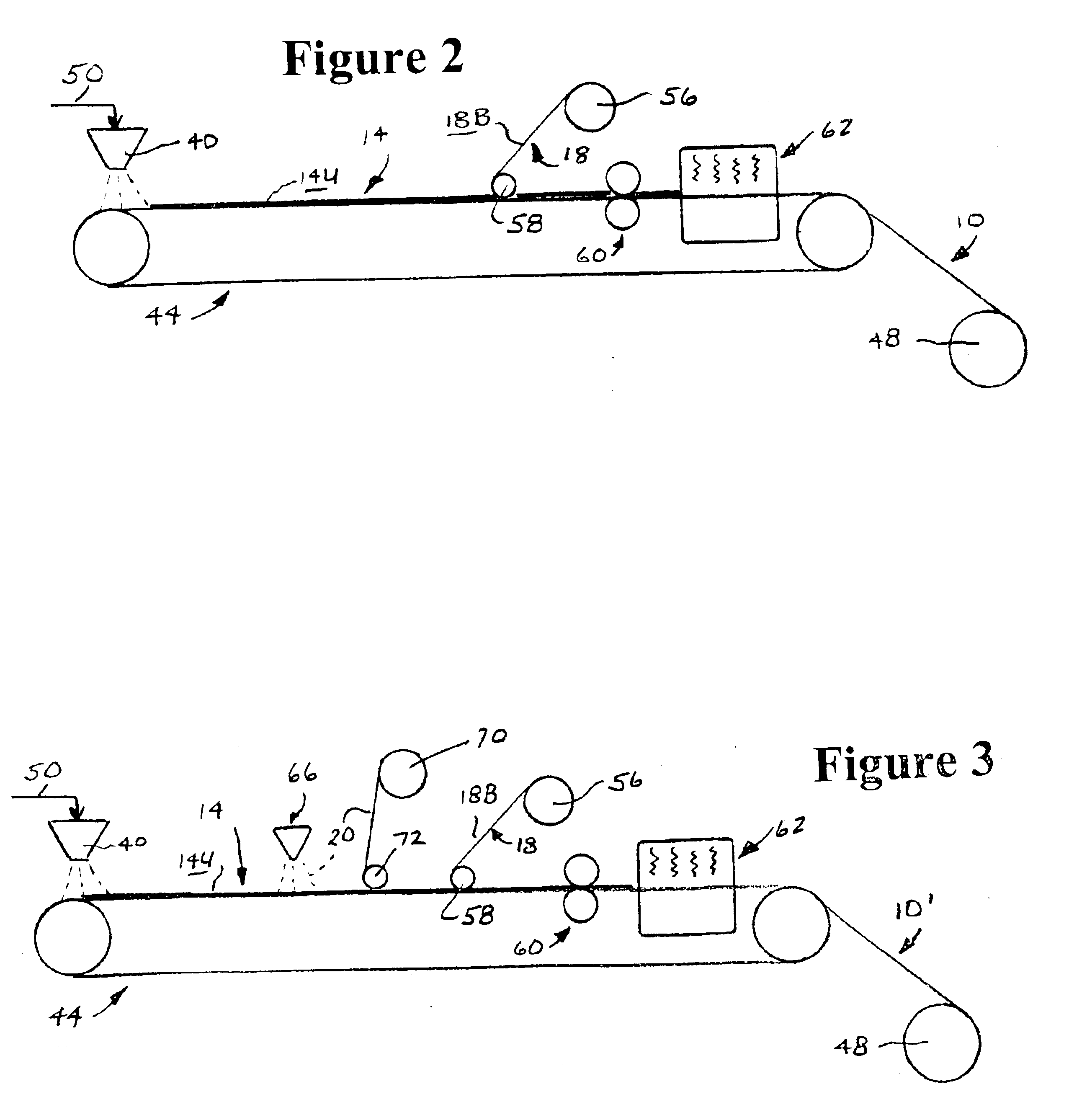Durable, liquid impermeable and moisture vapor permeable carpet pad
a carpet pad, impermeable technology, applied in carpet fasteners, instruments, light beam reproducing, etc., can solve the problems of moisture retention, pad odor, and liquid almost impossible to recover completely
- Summary
- Abstract
- Description
- Claims
- Application Information
AI Technical Summary
Benefits of technology
Problems solved by technology
Method used
Image
Examples
invention example 1
[0061]A carpet pad was formed by laying a barrier film of the butylene / poly(alkylene ether) phthalate copolymer material available from E. I. du Pont de Nemours and Company, Wilmington, Del., under the trademark “HYTREL 4778” approximately one mil (˜1 mil) in thickness over a cushion layer formed from a rubber compound during the curing stage in the rubber cushion manufacturing process. The rubber cushion was then processed in the normal fashion such that the barrier film was firmly bonded directly to the rubber cushion. The resultant finished pad was approximately one-half inch thick (˜½ inch) and had a nominal density of twenty-three pounds per cubic foot density (23 lb / ft3).
invention example 2
[0062]A carpet pad was formed by bonding a layer of the same barrier film as used in Invention Example 1 to a commercially available, nominal six pounds per cubic foot density (6 lb / ft3), one-half inch thick (½ inch) rebond polyurethane cushion as used in Prior Art Sample A using a spray adhesive available from 3M Company, Minneapolis, Minn., as “3M Blue 72”. The adhesive was applied to one side of the cushion from a spray can in accordance with label directions. The barrier film was then adhered to the cushion while the adhesive was still tacky and allowed to dry for approximately ten minutes (˜10 min.)
invention example 3
[0063]A carpet pad was formed by bonding a layer of the same barrier film as used in Invention Example 1 to a commercially available, nominal six pounds per cubic foot density (6 lb / ft3), one-half inch thick (½ inch) rebond polyurethane cushion as used in Prior Art Sample A using a 0.7 ounce per square yard (0.7 oz / yd2) polyester web adhesive available from Bostik Company, Middleton, Mass., as “PE 120-20”. The polyester web adhesive was placed between the cushion and barrier film and melted by lightly pressing a hot iron over the farrier film. The temperature of the hot iron was adjusted not to exceed three hundred degrees Fahrenheit (300° F.).
PUM
| Property | Measurement | Unit |
|---|---|---|
| pressure | aaaaa | aaaaa |
| thickness | aaaaa | aaaaa |
| thickness | aaaaa | aaaaa |
Abstract
Description
Claims
Application Information
 Login to View More
Login to View More - R&D
- Intellectual Property
- Life Sciences
- Materials
- Tech Scout
- Unparalleled Data Quality
- Higher Quality Content
- 60% Fewer Hallucinations
Browse by: Latest US Patents, China's latest patents, Technical Efficacy Thesaurus, Application Domain, Technology Topic, Popular Technical Reports.
© 2025 PatSnap. All rights reserved.Legal|Privacy policy|Modern Slavery Act Transparency Statement|Sitemap|About US| Contact US: help@patsnap.com


